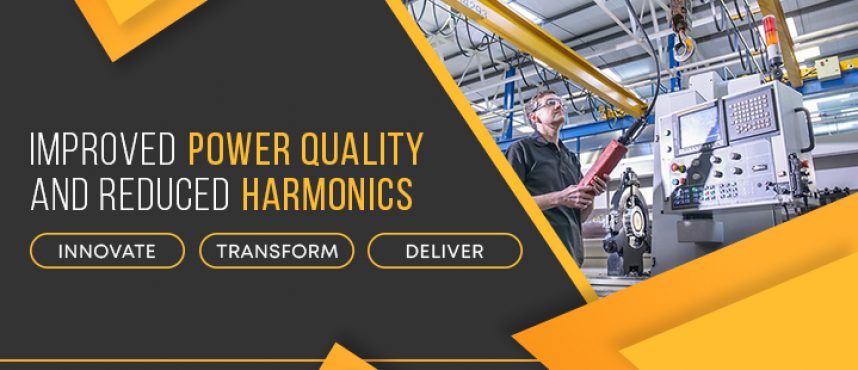Harmonic Filters for Improving in Power Quality
The cleaner your grid, the higher your benefit! NTIPL’s as Active Harmonic Filter installers and Power Optimizers help to eliminate harmonic pollution from the grid, reduce Power Quality problems and use energy more efficiently and reliably.
Harmonic pollution is a growing challenge with the increased use of power electronics and non-linear loads (such as variable speed drives, UPS, computers, servers, TV sets, etc.) The presence of Harmonics increases the RMS current in power networks. The circulation of harmonic currents through the system impedance creates voltage harmonics that produce voltage distortions and thus depreciate the quality of the supply voltage. This leads to higher operating and energy costs, production/process downtimes, overheating and malfunction of equipment.
Harmonic Filters are typically used to lessen the power quality problem known as harmonic waveform distortion. Consequently, they minimize the thermal and electrical stress on the electrical infrastructure, disregard the risk of harmonics-related reliability issues and allow for long-term energy efficiency and cost savings. Harmonic filters will play an important role in ensuring better power quality, especially now that most modern electrical devices are of the non-linear type.
What are the consequences of Harmonics in Electrical and Electronic Machine?
Consequences of having a high harmonic level in the system include the following:
- Harmonics results in significant overheating of equipment, cables, and wires
- Neutral overload in 3-phase systems
- Electromagnetic interference with communication systems
- Loss of efficiency in electric machines
- Increased probability in the occurrence of resonance
- Nuisance tripping of thermal protection
- Errors in measures when using average reading meters
What are the types of Harmonic filters?
Harmonic filters can be broadly classified into two basic types:
- Passive Harmonic Filters
- Active Harmonic Filters
The so-called hybrid harmonic filter is merely a combination of passive and active types.
NTIPL as one of the leading harmonic filter dealers and power quality analyzer has been offering a comprehensive range of key components for Energy Efficiency Solutions for effective Power Factor Correction (PFC) and Power Quality Solutions for many years that include both the active and passive harmonic filters.
A harmonic filter provides the following benefits:
- Highest safety and reliability
- Overload protection
- Internal short-circuit protection
- Overheating protection
- Overvoltage and under-voltage protection
- Inverter bridge protection
- Resonance protection
- Fan fault alarm
What are the applications of Harmonic filters?
Some key applications of Harmonic Filters are given below that are appropriate for electrical power distribution systems to supply a significant amount of harmonic-producing loads:
- Industrial – Adjustable Speed Drives, Arc Furnaces, Arc Welders and HVAC
- Commercial – SMPS, UPS Systems, Medical Devices, and Data Centers
What are the key selection criteria when buying harmonic filters?
Harmonic filter selection is practically based on the intended application and power quality objectives. The engineer or end-user must weigh the pros and cons of using either an active, passive or hybrid harmonic filter for a certain application. In the end, the decision will depend on the technical and economic aspects. Once the filter type is chosen, optimized sizing will follow.
In sizing, for example, a passive filter may require the following data:
- Harmonic profile load current
- Major load current
- A harmonic factor of the neutral current
- Detailed Power Quality Studies
- Configuration of the existing or proposed system
On the other hand, active harmonic filter sizing depends primarily only on the nonlinear load requirement. In addition, the AHF is modular and relatively less extensive power quality studies are needed.




